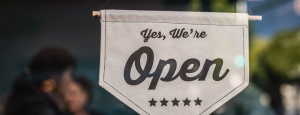ShopLab, Philips’ Research and Development Unit, has recently patented a Window Shopper Gaze Tracking System. It is a system that tracks the eye patterns of window shoppers, allowing stores to see what the shoppers see, and follow their gaze. Do they focus more on a specific area of the window? Do they spend more time looking at certain products in the window? Are they contemplating purchasing an item?
The system, which utilizes several video cameras and eye tracking software, allows for stores to track the interests of shoppers before they even enter the store. It can then identify which item the shopper is staring at the longest and possibly post additional information regarding the item on a screen (could be interactive) above or around the display. I imagine myself staring into an Anthropologie window display, contemplating going in to try on the fabulous dress that is on the mannequin. “I could always wear it to that wedding I have coming up . . . oh, but I better not, I don’t need to spend the money…” When suddenly, an interactive screen right next to the dress I am daydreaming about, starts showcasing how versatile the dress is, and how it can be worn casually during the day and then dressed up at night. Who knows, this just might give me the incentive I need to enter the store and try the dress on.
So, what’s the point? Does this apply to categories outside of fashion? What if this same technology were to be used on a beer display in store? Wouldn’t it be exciting to be able to see what grabbed a consumer’s attention and what retained their attention? Retailers and advertisers could tailor their displays to fit the “gaze” of the consumer. Various displays and digital mediums could be tested to see what actually grabs and shopper’s attention versus what they scan right by. This would allow marketers and retailers to partner together to create more effective displays and display locations. In addition to this, what if, after tracking a consumer’s line of sight, an interactive kiosk next to the display prompted the consumer? The kiosk could contain coupons, recipes, party planning tips, etc., which may encourage a consumer to make a purchase. Or, it could ask for consumer data and send information directly to their cell phones. The possibilities are endless as this technology gets off the ground. How can we use this technology to our advantage?
Image credit to http://www.research.philips.com/
– Contributed by Tera Gill

